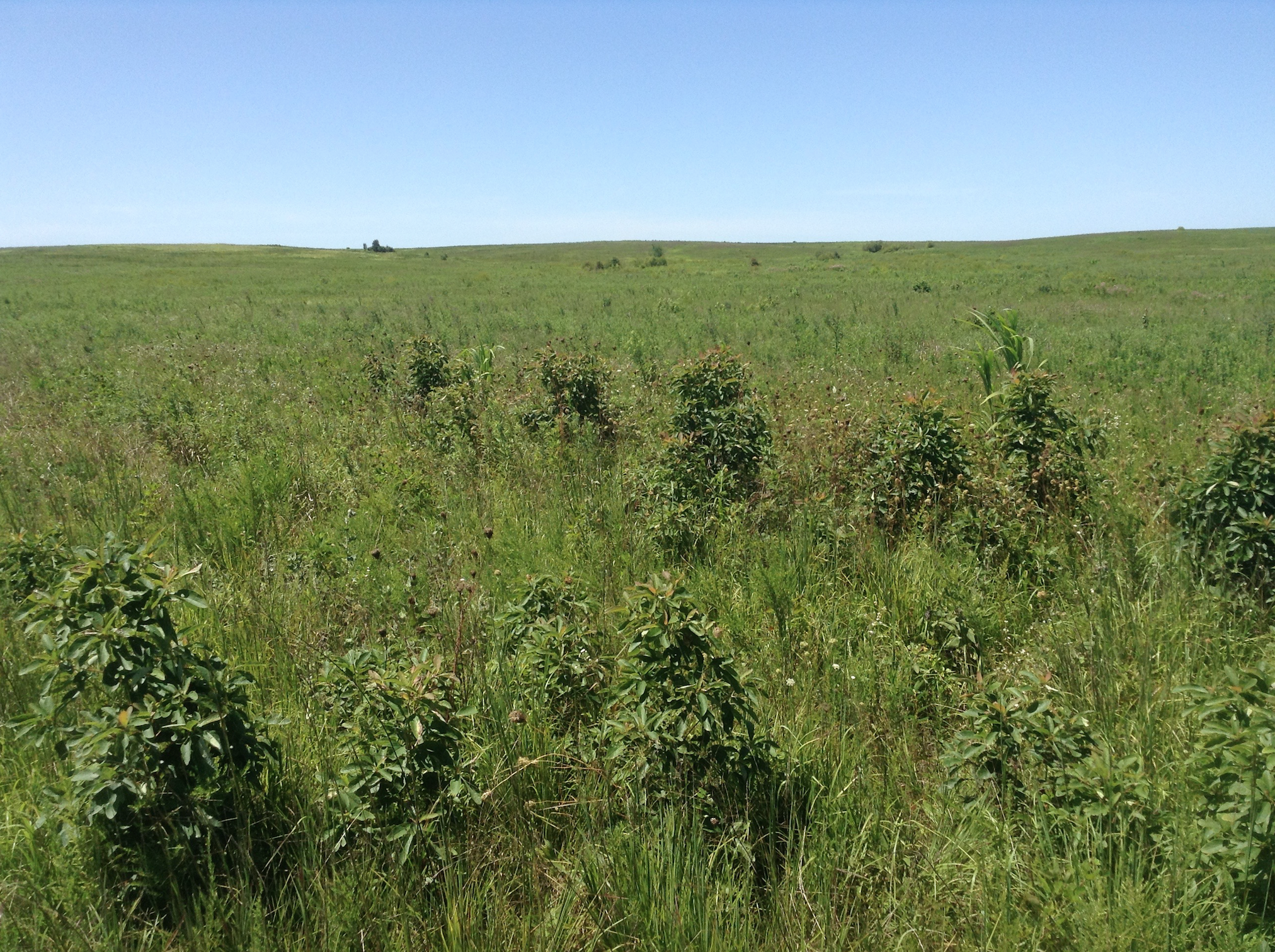What are Southeastern
Grasslands?
Southern grasslands come in all shapes and sizes, ranging historically from a fraction of an acre to millions of acres. There are more types of grasslands in the Southeast than the entirety of the Great Plains and Midwestern prairies. Unfortunately most Southern grasslands have declined by at least 90% of their former distribution.
Prairies
Prairies are nearly treeless landscapes dominated by native grasses and wildflowers with scattered shrubs. Prairies once covered an estimated 7-10 million acres across the southeastern U.S. All types have suffered loss exceeding 99%.
Glades
Glades are sparsely vegetated rocky grasslands developed over relatively level bedrock of various types. They are often wet in winter and spring and become desert-like in summer and fall. Soils are very shallow. Annual grasses and herbs dominate these habitats.
Savannas
Savannas are grasslands with scattered trees. Historically they were the most common and widespread of all grassland types and occupied more than 120 million acres of the southeastern U.S. Less than 1% of historical savanna acreage remains.
Riverscour
Riverscour grasslands occur along medium to large streams in Southern Appalachia and the Interior Highlands. These small-scale grasslands are dominated by grasses, herbs, and shrubs and are kept free of trees by periodic scouring floods.
Barrens
Barrens are small-scale grasslands ranging from a fraction of an acre to several acres. They occupy sloping, rocky, gravelly, or marly slopes associated with a wide variety of bedrock outcrop types. Many types of barrens still remain relatively intact.
Balds
Balds are small grasslands found on mountain-tops and ridges of the Southern Appalachian Mountains above 5,000 ft elevation and are relicts of the former alpine tundra that once extended into the South during the last Ice Age 18,000 years ago.
Meadows
Meadows are small grasslands of stream valleys. They were maintained historically by beaver in combination with flooding, burning, and grazing. Meadows have been so severely altered that the original composition of many types is unknown.
Marshes
Marshes are wet grasslands with seasonal or permanent standing water and emergent grasses, sedges, and herbs. Most in our area were associated with depression ponds and many were embedded in open prairies or savannas historically.
Bogs
Bogs are one of a few types of wet grasslands. They are found in Southern Appalachia in mountain coves, have continuously saturated, deep peaty acidic soils, and are dominated by sedges, grasses, and rushes as well as a variety of herbs and shrubs.
Coastal
Coastal grasslands occur along the Atlantic Ocean and Gulf of Mexico and consider a variety of types from coastal sand dune grasslands and rocklands to coastal or near-coastal savannas and open wetlands.
Fens
Fens are mineral-rich, groundwater-fed open wetlands dominated by sedges, grasses, and herbs. They often are associated with base-rich soils over limestone, dolomite, or mafic rock and may have gravelly, marly, or mucky sediments.
sandbar
Along some of the larger rivers of our region (Mississippi, Arkansas, Missouri) grasslands occur on sandbars. Unlike riverscours, these bars are unstable and frequently appear and disappear through time.












